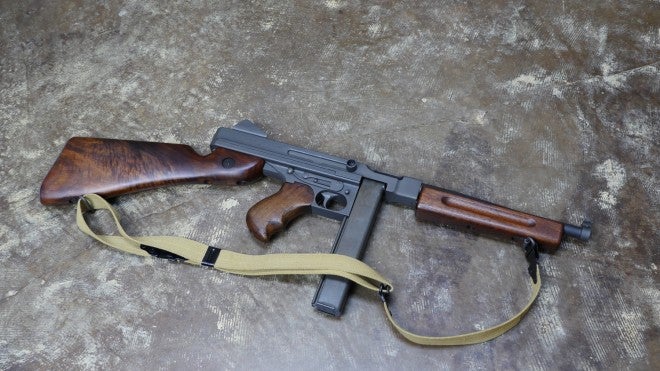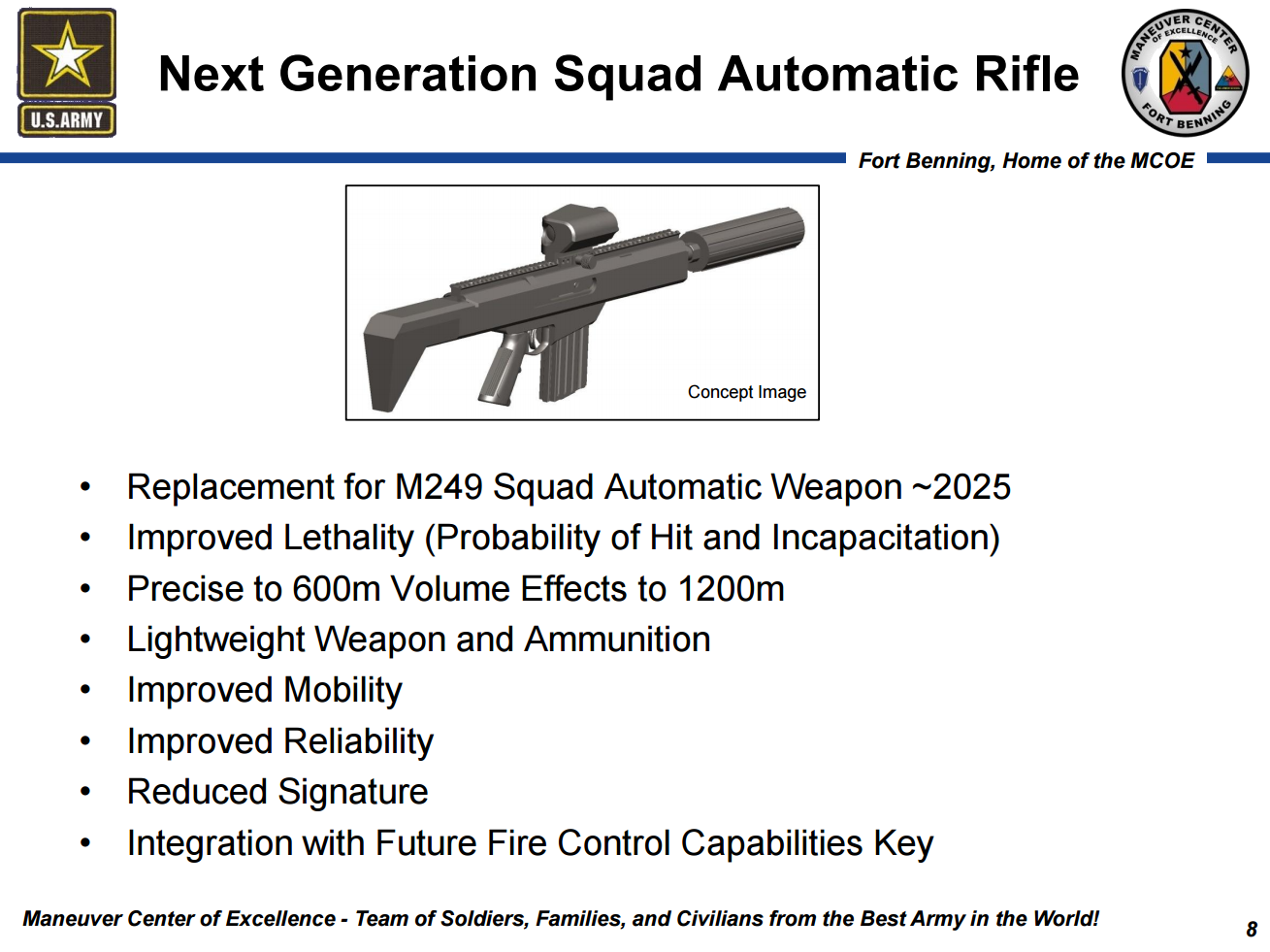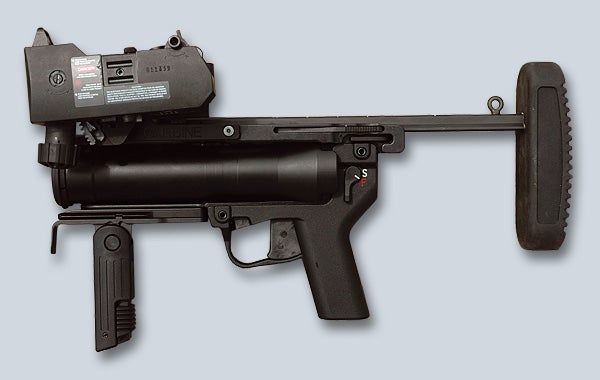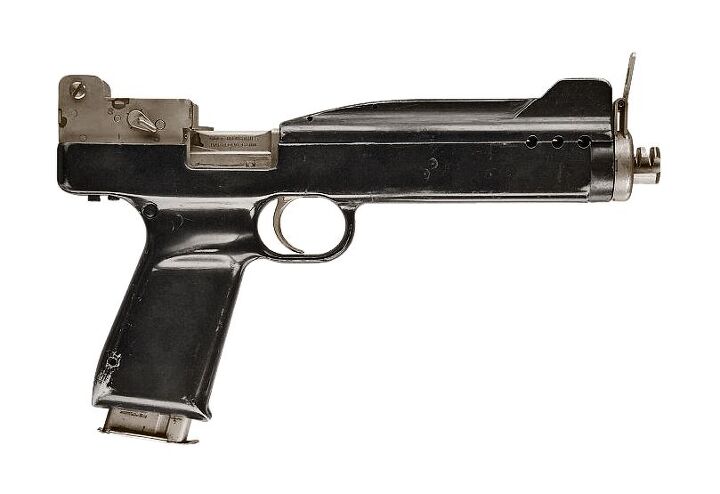Earlier this week, Business Insider released an article written by Christian Lowe entitled “6 weapons the US military should bring back from the dead“ with a very self-evident, but interesting premise. However, the weapons (all firearms, oddly) that the article outlines are very poor choices, so today I want to talk about why these choices are so poor, and maybe suggest some better alternatives of my own. Let’s take it point by point, quoting his text and following that with my responses:
1. M1 Carbine
You might not know it, but more M1 Carbines were produced during World War II than M1 Garands — about 500,000 more — and it became the standard-issue long gun for paratroopers and support troops like mortarmen and artillerymen.
Beloved for its short, 36-inch length and 6-pound weight, the M1 fired a fairly accurate .30-caliber rimless round that zinged at about 2,000 feet per second at the muzzle — that’s getting close to the speed of a standard mil spec 5.56 round. The M1 feeds from a 15- or 30-round magazine, making it a killer in close quarters. So why not ditch the .300 Blackout and go retro?
And FYI, one of the M1’s original builders, Inland Manufacturing, has restarted the line and is selling these things like hotcakes.
It turns out that the United States military agrees with the point about a 6lb, 36″ long rifle being the cats pajamas, so much so that in fact that both the Army and Marine Corps are fielding as general issue M4 Carbines, which are three inches shorter, almost as light, and have twice the effective range.
Suggesting reissuance of the M1 Carbine is the equivalent of suggesting that the Army re-adopt the M4 Sherman tank, or the Air Force reintroduce the P-40 Warhawk fighter aircraft: We already have weapons that fill those roles much, much better, which are more advanced, reliable, and effective. I’ve spent quite a lot of time defending the M1 Carbine, saying it shouldn’t be dismissed as simply a PDW ancestor and that it deserves some place in the historical timeline of the assault rifle, but that is not the same thing as saying it would be a competitive firearm today. During Korea, Brig. General S. L. A. Marshall studied the use of the weapons of the time – including the M1 Carbine – in combat operations, and his 1951 report damned the weapon so severely that the Army wouldn’t even come back to the concept of a general-issue carbine for another four decades, with the M4. Marshall’s methodology was flawed, but it’s notable that every single one of his criticisms of the M1 Carbine has proven valid in the proceeding sixty-five years – even the very well-made Inland reproductions are having reliability issues in the hands of reviewers like InRange TV.*
*These problems are endemic to the design of the rifle, and not the result of Inland Mfg’s manufacturing or quality control. They are pretty much doing the best they can with the design they are given.
The .30 Carbine caliber, which Lowe suggests could replace the .300 Blackout, is as equally an absurd choice as the carbine that fires it. The caliber in military Hague-compliant full-metal-jacket form is a notoriously poor wounder (although even that has been exaggerated over time), and has awful ballistic characteristics more akin to a small caliber magnum handgun round than a rifle round. For comparison, the Soviet 7.62x39mm M43 caliber fires a full-metal-jacket steel-cored pointed projectile at close to 400 feet per second faster than the M1 Carbine’s ball round. The finer ballistic shape of the Soviet projectile and heavier weight also allow it to carry energy better. It should be the superior performer, so what do we know of that round’s lethality? Here’s what respected doctor and ballistician Martin Fackler has to say about the M43:
The Soviet AK-47 Kalashnikov fires a full-metal-jacketed, boat-tail bullet that has a copper-plated steel jacket, a large steel core, and some lead between the two. In tissue, this bullet typically travels for about 26cm point-forward before beginning significant yaw. This author observed, on many occasions, the damage pattern shown in Fig 2 while treating battle casualties in Da Nang Vietnam (1968). The typical path through the abdomen caused minimal disruption; holes in organs were similar to those caused by a non-hollow-point handgun bullet. The average uncomplicated thigh wound was about what one would expect from a low-powered handgun: a small, punctate entrance and exit wound with minimal intervening muscle disruption.
So why on earth would the US military adopt a round that starts off 15% slower, and sheds its velocity 40% faster than even the lackluster 7.62×39 M43? Our armed forces are not in the business of giving the enemy a fighting chance!
What they should bring back instead: The Colt MARS 5.56x30mm Subcarbine/PDW

Image source: municion.org
The Colt MARS was a shortened M16-derived carbine designed in 1997 for a small but highly efficient 5.56x30mm cartridge designed to be effective to 300 meters. Although introducing a new cartridge would present some logistical challenges, the small MARS carbine (less than two feet long with the stock collapsed!) could potentially replace most of the pistols in the military’s inventory.
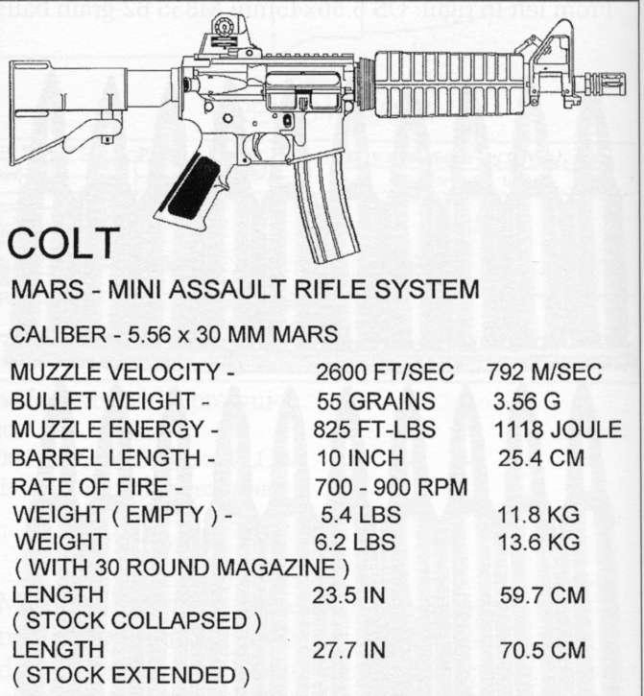
Image source: The Black Rifle II, by Christopher Bartocci
2. Browning Automatic Rifle
Really, all you need to say about the BAR is “thirty-ought-six.”
End of discussion.
Designed by John Browning in 1917 for the trenches of Europe, the BAR sits in a netherworld in which it is not quite a machine gun but not quite a rifle. Fed from a 20-round magazine, the BAR’s .30-06 round packs nearly 3,000 feet per second at the muzzle and can reach out well over 1,000 yards.
Sure, it weighs a whopping 16 pounds, and never mind that the average life span of a BAR gunner in World War II combat was estimated by some to be about 30 minutes. But with the popularity of the MK-17 SCAR and its .308 round these days — not to mention the Marine Corps’ outfitting some of its SAW gunners with the Heckler & Koch 7.62×51 HK417 — maybe the BAR should be given another chance.
Let’s get three details out of the way right off the bat:
- 5.56mm also packs “nearly 3,000 feet per second” at the muzzle, while weighing less than half what .30-06 does.
- “The average life span of a BAR gunner in World War II combat was estimated by some to be about 30 minutes.” I’m sorry, what? I searched the Internet for references for this “fact”, and found a bunch of people repeating it, but no citations. This sounds like yet another one of those myths about World War II conjured up to make the conflict sound more extreme and badass, like how Shermans were so flammable they were nicknamed “Ronsons” (despite the fact that wet ammo rack equipped tanks were the safest of the war), or how every German soldier had an assault rifle by the end of the war. Best case scenario, this “30 minute” statistic is in reference to a specific incident or battle with particularly intense fighting, but at this point, who knows where it comes from.
- The USMC is issuing the 5.56mm M27 Infantry Automatic Rifle, based on the HK416, not the 7.62x51mm HK417. Because, again, 7.62mm (or .30-06, they are very similar) ammo is heavy as sin.
The BAR was designed in 1917 as an offensive weapon for the trenches of World War I. It is a heavy, inconvenient weapon that exhausts its ammunition supply quickly and is difficult to reload, while sporting fantastically heavy magazines and ammunition. It was a terrifying weapon in the Great War, but so was a Mark I tank, and those suffocated their own crews with engine fumes.
What they should bring back instead: The German FG-42 Machine Rifle
A fragile, expensive WWII-era machine rifle might seem like an odd choice for resurrection, but the concept of a side-mounted magazine-fed select-fire open/closed bolt support weapon still has promise today. Obviously, it would be silly for the US military to recreate the FG-42 exactly from original blueprints, but that doesn’t mean the Fallschirmjägergewehr can’t serve as the direct inspiration for a new weapon. In fact, it seems this might just happen, as a “Next Generation Squad Automatic Rifle” appeared in a Fort Benning presentation at the 2015 NDIA conference.
3. Stoner 63/M63
Sure, the Stoner 63 was a maintenance headache, but its groundbreaking modular technology paved the way for predecessors like the Sig Sauer MCX and the early concept of the FN SCAR family of special-operations rifles.
Chambered in 5.56 and designed primarily by Eugene Stoner, the father of the M16, the M63 was manufactured in a range of variants, including a light machine gun version with a 20-inch barrel fed from an open bolt to an assault rifle variant that fired from a closed bolt. Fed from either a standard 30-round magazine or a belt-fed drum, the Stoner 63 weighed about 8 to 12 pounds.
Manufactured in limited quantities in the 1960s, the Stoner 63 became a favorite of SEAL teams operating in Vietnam before it was removed from the inventory in the 1970s in favor of the M249 SAW.
The concept of a convertible rifle/machine gun combination weapon has been around for a long time, and it has never caught on. The primary advantage of this idea is that it reduces the cost of manufacturing light machine guns, as their components are made in much larger quantities to supply rifle contracts, as well as for machine guns. The problem with this idea is that if you design a weapon like this that is robust enough to function as a machine gun in general service, you end up with rifles that are nearly as heavy as the machine guns! At that point, it would be better to simply issue belt-fed light machine guns to every soldier, instead of messing around with the convertible concept, but there’s a reason that’s not done. Individual infantrymen need the mobility that a lightweight rifle can afford them, and even the SEAL recce teams Lowe mentions have transitioned to heavy-barreled fully automatic M4 variants instead of heavier belt-fed weapons!
What they should bring back instead: The KAC/Stoner LMG
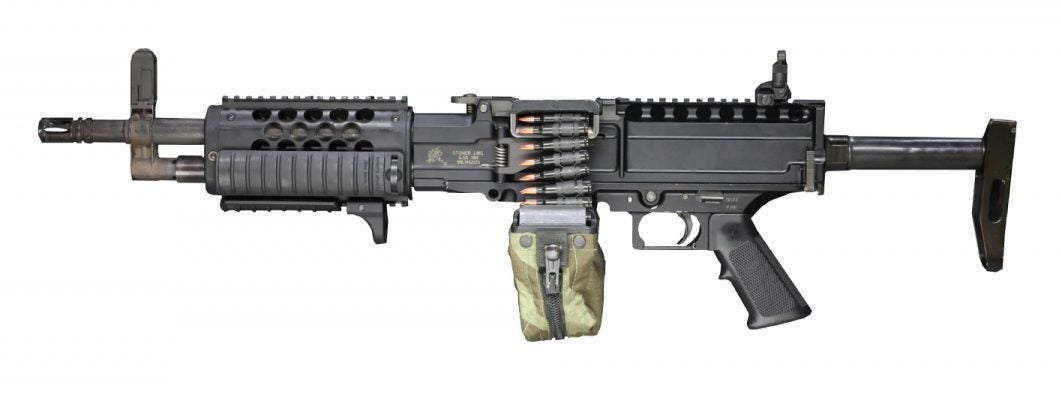
A previous version of the KAC LMG. Image source: knightarmco.com
The limitations of the Stoner 63 concept became obvious to Eugene Stoner by the 1980s, and the design that eventually became the KAC LMG began essentially as an improved follow-on to the Stoner 63. Instead of having convertible receivers, the LMG was a fixed-configuration belt-fed-only weapon, which allowed it to be lighter, cheaper, and more reliable than its predecessor. Although it has taken 30 years, Knight’s Armament Company – which inherited the design from Stoner’s ARES, Inc – announced this year that an improved model of the LMG would finally be brought to market. Given the lackluster reliability and excessive weight of the US Army’s FN-made M249 LMGs, maybe it’s time to give the KAC LMG another look, even if only as the basis for a new weapon.
4. M79 grenade launcher
The M79 grenade launcher was America’s first attempt to meld the range of a mortar with the portability of a rifle grenade. The innovative “high-low propulsion system” kept recoil low while also reducing weight.
The single-shot, break-action M79 fired a 40 mm grenade with a variety of warheads, including a specially designed one for close-in combat (the regular 40 mm grenade needed at least 30 meters to arm) and was used extensively in Vietnam. It was used and modified by special-operations forces — including the SEALs and the Special Forces — since its development in the 1960s and was eventually replaced by the M203 and later the M320.
But the M79 still had fans in more recent conflicts, with some arguing it had better range (about 400 meters) than the newer Heckler & Koch-built M320. It was even featured in the arsenal of bin Laden raid SEAL Mark Owen, who dubbed it the “pirate gun.”
A standalone 40mm grenade launcher is not an awful idea actually, and it turns out that since 2008 the military agrees:
What they should bring back instead: Denel Neopup PAW-20 20mm Long-Range Grenade Launcher

Image source: soldierweapons.ru
The fighting in Afghanistan has brought to light a need for capabilities to defeat entrenched enemy machine gunners at long distances (over 600m). There have been several proposed solutions to this, but one promising possibility is that of integrating long-range high explosive firepower into the infantry squad. The Denel Neopup PAW-20 grenade launcher is an example of a weapon that has or could be augmented to have capabilities of this kind, while being relatively lightweight and allowing the platoon or squad to carry more ammunition than might be possible with 40mm or larger weapons.
The PAW-20 has recently made a comeback, too: The company that produces it recently received their first orders for the weapon, which has been redubbed “Inkunzi”.
5. 1911 pistol
Ahhh, the M1911.
Literally one of the most revered guns in US military history, the M1911 is one of the most comfortable and powerful semiautomatic handguns ever developed. It’s a favorite among competitive shooters (particularly more modern double-stack versions) and is still fielded in limited quantities to Marine Corps special-operations troops — though that could change with greater adoption of the Glock 19 throughout SOCOM.
With his powerful .45 ACP round and a magazine-fed, seven-round capacity, the M1911 served as the standard American military sidearm for about 75 years. The M1911 was ditched in the 1980s in favor of the lighter, higher-capacity 9 mm Beretta M9, but with the Pentagon looking to replace that pistol, many are wondering whether the 1911 should make a comeback.
Aside from the fact that the military could literally issue string cheese packets in lieu of handguns and be hardly any worse off, the reason the 1911 is favored by competition shooters and elite tactical operators (or people who think they are elite tactical operators, perhaps) is because there is a large body of gunsmiths who can work on and fine tune the pattern, and because there are a large number of manufacturers of 1911 components (which can then subsequently be tuned by a gunsmith).
Even though there are enough 1911 gunsmiths to support a healthy competition circuit, issuing a weapon that needs to see a trained professional smith who costs $60/hr before it functions properly is probably not a good option for the US military.
What they should bring back instead: The Colt SCAMP .22 caliber Machine Pistol
The machine pistol is one idea that hasn’t yet had its due. The constraint of having to use existing pistol ammunition increases the “bucking” motion of a fully automatic handheld weapon to the point where weapons like this aren’t very useful. What if that constraint were removed? Would the machine pistol finally become the personal defense weapon of choice for military personnel? Who knows, but it’s worth a shot!
6. Thompson submachine gun
Originally dubbed the “Annihilator” by its inventor, the Thompson is believed to be the first firearm to be formally designated a “submachine gun.” Operating a straight- or delayed-blowback action like a pistol, the Thompson fired the .45 ACP round like the M1911 and could be loaded with a 30-round “stick” magazine or a 100-round drum. Though it was developed as a trench sweeper for World War I, the Thompson saw most of its action in World War II.
In all, about 1.5 million Thompsons were reportedly manufactured during World War II, but the gun suffered from a hefty 11-pound weight and is notoriously difficult to control in rapid fire. The Thompson was all but scrubbed from the US inventory in the 1970s in favor of newer submachine gun designs firing 9 mm ammunition like the H&K MP5.
So, I guess we are just going to forget about the .45 caliber M3 Grease gun, which served with US tankers into the 1990s, in favor of a narrative about the evil Europellet 9mm overcoming the righteous man-killin’ .45 ACP, eh?
But sure, let’s reissue a weapon that, in his own words “suffered from a hefty 11-pound weight and is notoriously difficult to control in rapid fire”, and which in exchange for this fires pistol ammunition.
What they should bring back instead: Lanchester Mk. 1 Submachine Gun

Image source: historicalfirearms.info
Because if you’re going to revive a heavy, inaccurate, obsolete, and ludicrously expensive boat anchor, you might as well pick one with some class.
 Your Privacy Choices
Your Privacy Choices
